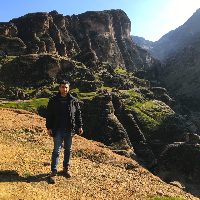Numerical study of earth dam in ABAQUS software and comparison of software results with instrumentation readings
Author(s):
Article Type:
Research/Original Article (دارای رتبه معتبر)
Abstract:
One of the most important features required in the analysis of earth dams is the measurement of pore water pressure, which gradually increases in the dam body from the moment of construction. It is very important to control the stability of earth dams in different stages of construction. Therefore, in order to fully consolidate the core materials, it is very important to implement the earthen dam at a uniform speed. In the present study, Rayleigh's damping rule has been used in the calculation of the pore water pressure of the Azadi earth dam, and two quasi-static and dynamic analyzes have been used in a non-linear. In order to verify the accuracy, the pore water pressure of the clay core due to changes in the water level of the reservoir after dewatering has been compared by Abaqus software, the model and the results of instrumentation in quasi-static mode. In order to match the observed and predicted data, multivariate regression was used, and the value of R2=0.9747 indicates a very good match between the observed and predicted data. Comparison of research results showed that pore water pressure in dynamic analysis is 39% higher than in quasi-static analysis. The maximum ratio of pore water pressure (ru) in the core of the dam was 0.24; In this way, according to the obtained pore water pressure ratio, hydraulic failure will not occur in the core.
Language:
Persian
Published:
Journal of Hydrogeology, Volume:8 Issue: 2, 2024
Pages:
29 to 41
https://www.magiran.com/p2812725
سامانه نویسندگان
مقالات دیگری از این نویسنده (گان)
-
Evaluation of Total Stress and Arching Coefficient by Back Analysis with Result of Stepwise Construction (Case Study: Marvak Earth Dam)
Mahdi Komasi *, , Ahmadreza Mazaheri
Irrigation & Water Engineering, -
Analysis of Blast Effect on Nonlinear Behavior of Steel Flexural Frames Using Abaqus Software
Simin Kohzadialvar, Mehdi Komasi, *
Journal of Civil Engineering and Materials Application, Winter 2022


